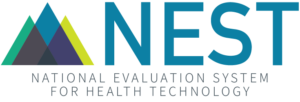December 9, 2021
Real-world evidence landscape review: Insights on the use of RWE from stakeholders across the medical device ecosystem
The RAND Corporation (RAND) has published a manuscript in the December 2021 issue of Value in Health based on a landscape review of perceptions about real-world evidence (RWE) for medical devices and its use in regulatory and coverage decisions.
RWE derives from registries, electronic health records (EHRs), health care claims databases and patient-generated health data (PGHD) and reflects health information that is collected in non-research settings – often during the routine delivery of care.
Greater use of these types of real-world data could reduce the cost of evidence generation and inform clinical, regulatory and reimbursement decision-making by providing evidence on the performance of products when used in less highly selected patient populations and care-delivery settings.
Download the full RWE Landscape Report
Device manufacturers, payers, health technology assessment organizations and regulators may be interested in the report’s findings.
RWE Landscape Review Goals
Commissioned by NESTcc and conducted by RAND from 2018 through 2020, the landscape review focused on three main goals:
- Describe how RWE is being used across the medical device industry.
- Explore the key challenges manufacturers experience generating RWE and using it to support regulatory and coverage decisions for their products.
- Share and draw lessons from case studies in which RWE was used in successful regulatory decisions.
Development of the Report
In executing their work, RAND undertook the following steps to provide a comprehensive overview of perceptions of RWE for medical devices within the ecosystem:
- Administering a web-based survey to medical device manufacturers
- Conducting semi-structured interviews with representatives of ten device manufacturers
- Holding interviews with eight payers and health-technology assessment organizations to better understand stakeholders’ views and challenges
- Developing four case studies which drew upon public documents and interviews with representatives from the FDA and manufacturers
Key Takeaways
Some conclusions from the landscape review include:
- Broad consensus exists among stakeholders that RWE has many strengths, including its comparative scale, generalizability and cost, relative to traditional clinical studies.
- Manufacturers are still in an exploratory phase as they examine RWD sources and seek to link together datasets to combine the strengths and address the limitations of each. While many companies are engaged in research, relatively few have submitted RWE in applications for premarket approvals.
- International regulatory agencies are increasingly requiring clinical evidence to reflect populations within their own jurisdictions (ex. EUMDR). Such regulations will force companies to find solutions to generate evidence on legacy products and will encourage many companies to expand their use of RWE.
- According to one interviewee during the evaluation, highlighting opportunities for RWE for new products is “the driver of industry’s interest in RWE” since it is the area where RWE could have the biggest potential impact.
Additional Reading
For examples of RWE used in medical device regulatory decisions, view the FDA’s March 2021 publication of selected examples with summaries, details on RWD sources, populations and descriptions of use.
NOTE
The RAND Corporation is separately developing an independent assessment of the NESTcc RWE Test-Cases.
An interim version of the assessment covering 14 Test-Cases will be published on the NESTcc website later this month.


